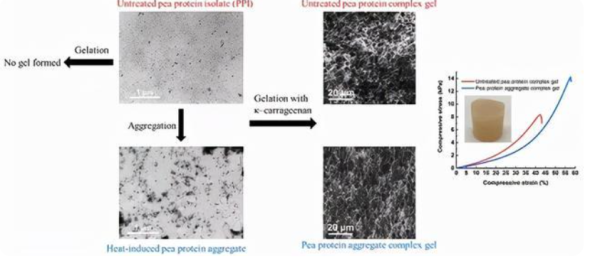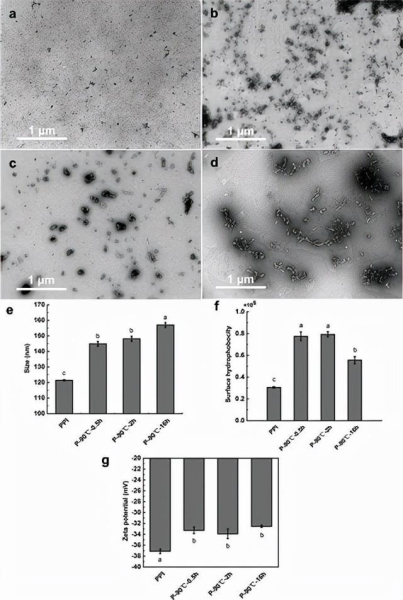Pea protein has attracted attention as an alternative to soy protein, but its weak gel properties limit its application in food formulations. Recently, a research team at the University of Alberta prepared heat-induced soluble pea protein aggregates in a first step, followed by thermally induced gelation of the soluble pea protein aggregates in the presence of a small amount of kappa-carrageenan. Mechanical property measurements indicate that the composite gel strength can be tuned by changing the properties of the pea protein aggregates to achieve compressive strengths up to 14.15 kPa.

Furthermore, this strong gel was achieved at relatively low concentrations of protein (7.5%) and kappa-carrageenan (0.5%), thus facilitating practical applications. Surface hydrophobicity, transmission electron microscopy, and Fourier transform infrared spectroscopy characterizations indicated that pea protein particle aggregates with hydrophobic patches on the surface could serve as active building blocks to build homogeneous three-dimensional networks with highly cross-linked structures of small molecules. pore size, so the gel has higher mechanical strength compared to the gel prepared from pea protein isolate and kappa-carrageenan. This study provides a new method for the construction of plant protein foods using protein aggregates and helps to understand the gel formation mechanism of pea protein aggregates in the presence of κ-carrageenan.

